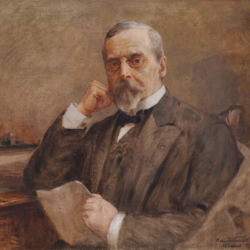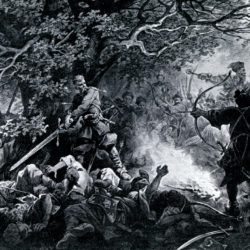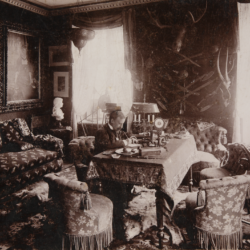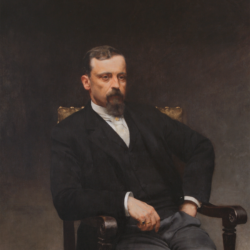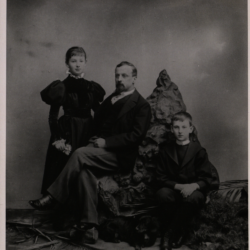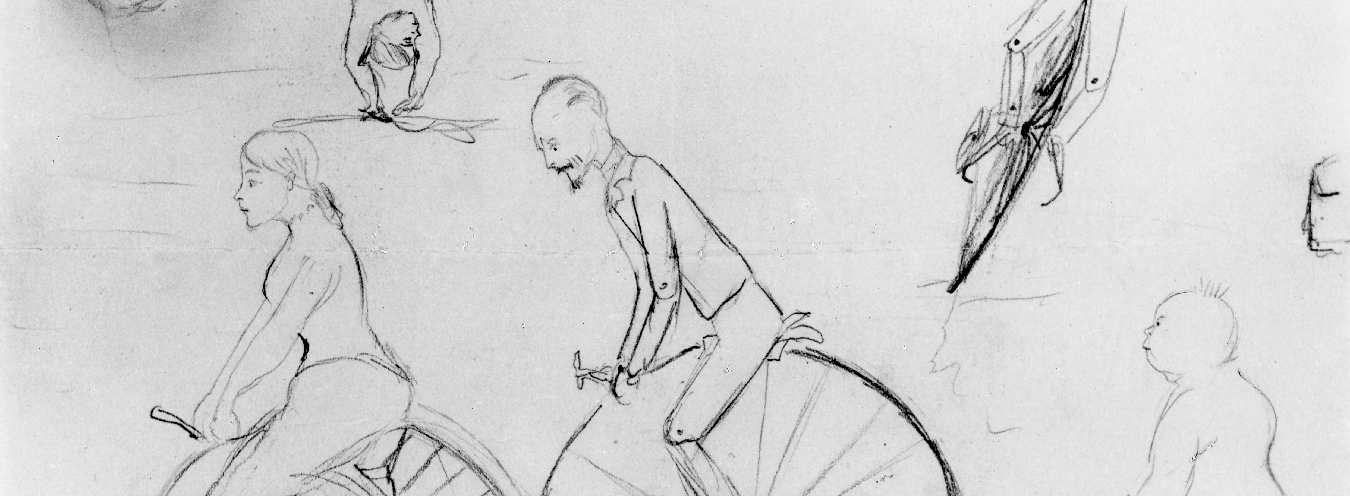
A letter to Janczewska
In a letter to Jadwiga Janczewska, Henryk Sienkiewicz observes:
The photograph in which you are wearing a hat is definitely better. In the other, your hands are gorgeous, but the left eye is visibly smaller than the right one, while the color of your eyes is too dark when compared to the color of your hair – thus, the look on your face is unnatural and alien. Your picture with a hat reminds me of Ophelia and the moment when Hamlet meets her, exclaiming: “Nymph, in thy orisons be all my sins remember’d.” The way you hold your hands brings to my mind Zarzecki’s painting Gwiazda Zaranna [Morning Star] – and if you held a book of prayers instead of an umbrella, I would entitle the work “After First Holy Communion.” The image reminds me of Princess Stella, the heroine of Kraszewski’s Morituri – an exquisite aristocrat, a Canonness in spe, ignoring the storms of life, loving tradition, and dreaming about the greatness of ancestors. A woman proud, poetic, sheer, and able to vanquish the inquisitive looks of the parvenus with just one powerful glance.[1]
A lot has been written about the writer’s talent for creating flirtatious descriptions as well as about his sensitivity towards beauty and detail. I, however, am not going to dwell upon this issue. Nor will I analyze the depictions of women’s bodies in Sienkiewicz’s literary and epistolographic oeuvre. I shall also refrain from referring to rumors about the relationship between the writer and his wife’s sister (whose painterly and detailed depiction follows the above-quoted fragment).
The letter to Jadwiga Janczewska entices me to ask questions of a different kind. The photograph – a “true,” “faithful,” modern, and reproducible medium – reminds Sienkiewicz of literary classics (William Shakespeare, Józef Ignacy Kraszewski), paintings (Mateusz Zarzecki), and religious ceremonies (Catholic First Holy Communion). Does – upon all these layers of meaning – the description retain its primary function of being the addressee’s portrait? Is September 1879 a special moment in media history? What is the importance of the circulation of this particular photograph? Let me summarize: Sienkiewicz travels around Europe, and so do the Janczewski sisters. They meet in Venice and have themselves photographed in one of the local studios. There are fourteen portraits of Maria, and almost as many of Jadwiga (the evidence is to be found in the bill attached to the letter), four of which Sienkiewicz sends to Vienna via postal service. It is a risky endeavor, as the photographs might be lost on their way, and the Janczewski sisters may not reach Vienna at the right moment to receive the letters. Sienkiewicz also sends four copies to Maria Dembowska, and the remaining ones are sent via certified mail to Janczewski sisters’ Warsaw address.
What is it like to stare with a man’s eyes at twenty-eight photographs of two women? What is it like to catalog these images, choosing what to send, and what to describe in detail? What is it like to write letters to the freshly acquainted women about their portraits (“badly done photographs, poorly retouched, with a red tint”), and to describe their bodies (“hands are gorgeous, but the left eye is visibly smaller than the right one,” “picture of a sweet little, Darling girl”)? How can Sienkiewicz compare Jadwiga to Ophelia, the Virgin Mary, a princess, a canoness, and a child participating in First Holy Communion? How can he compare Maria to a seductress, a suffragette, and a teacher? Such comparisons look like a record of insanity or at least a fragment written in a feverish state of mind.
To recapitulate, I shall not delve deeper into the story of the Janczewski sisters. The part of the letter I have referred to will serve as evidence of Sienkiewicz’s particular visual focus. I treat it as an introduction to the discussion of how Sienkiewicz shaped the visual aspect of his own persona. I am interested in the circulation of the writer’s portraits as well as in the cultural context of their distribution. Such an approach allows for situating my argument in the context of visual culture studies, defined in the following manner:
Sight is an element of visual culture: including the biology of sight and its cultural realizations (as well as the common preconceptions about them) but also phenomena such as invisibility, literal and metaphoric blindness, and the process of active overlooking. Visual culture is rooted in the processes of recognition, name-giving, and identity building based on images, portraits, gestures, or glances. It is about visualizing the world and our place in it – while the language we use to describe, imagine, and identify things is an integral part of visual culture.[2]
Przypisy
- H. Sienkiewicz, Listy [Letters], vol. 2, part 1, edited by M. Bokszczanin, Warsaw 1996, pp. 115–16; trans. K. F.
- Ł. Zaremba, “#zobaczyc_swiat. Od tłumacza” [#see_the_world: Translator’s note], an introduction to N. Mirzoeff, How to See the World, trans. Ł. Zaremba, Kraków-Warsaw 2016, p. 8. See also I. Kurz, “Kultura wizualna w Polsce. Fragmenty” [Visual culture in Poland: Fragments], in Kultura wizualna w Polsce. Fragmenty [Visual culture in Poland: Fragments], Warsaw 2017, pp. 8–23; trans. K. F.

